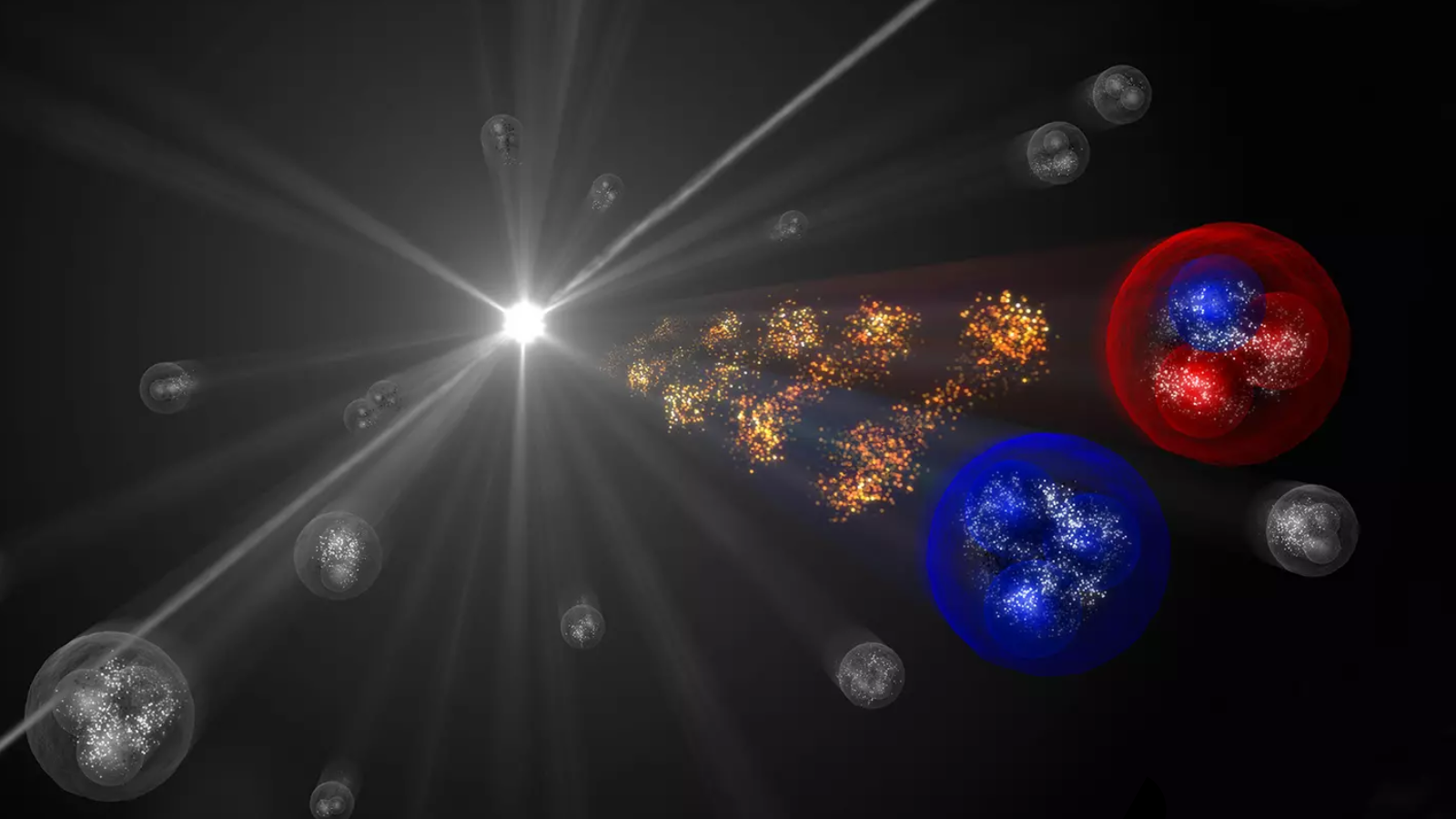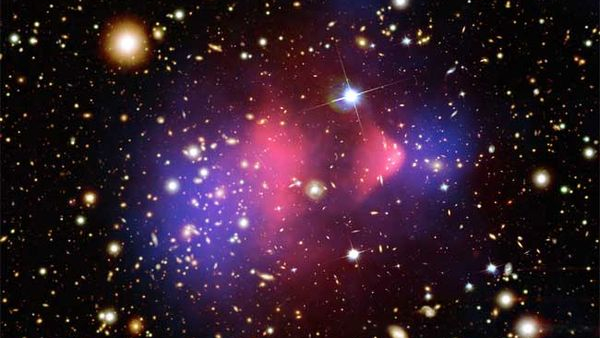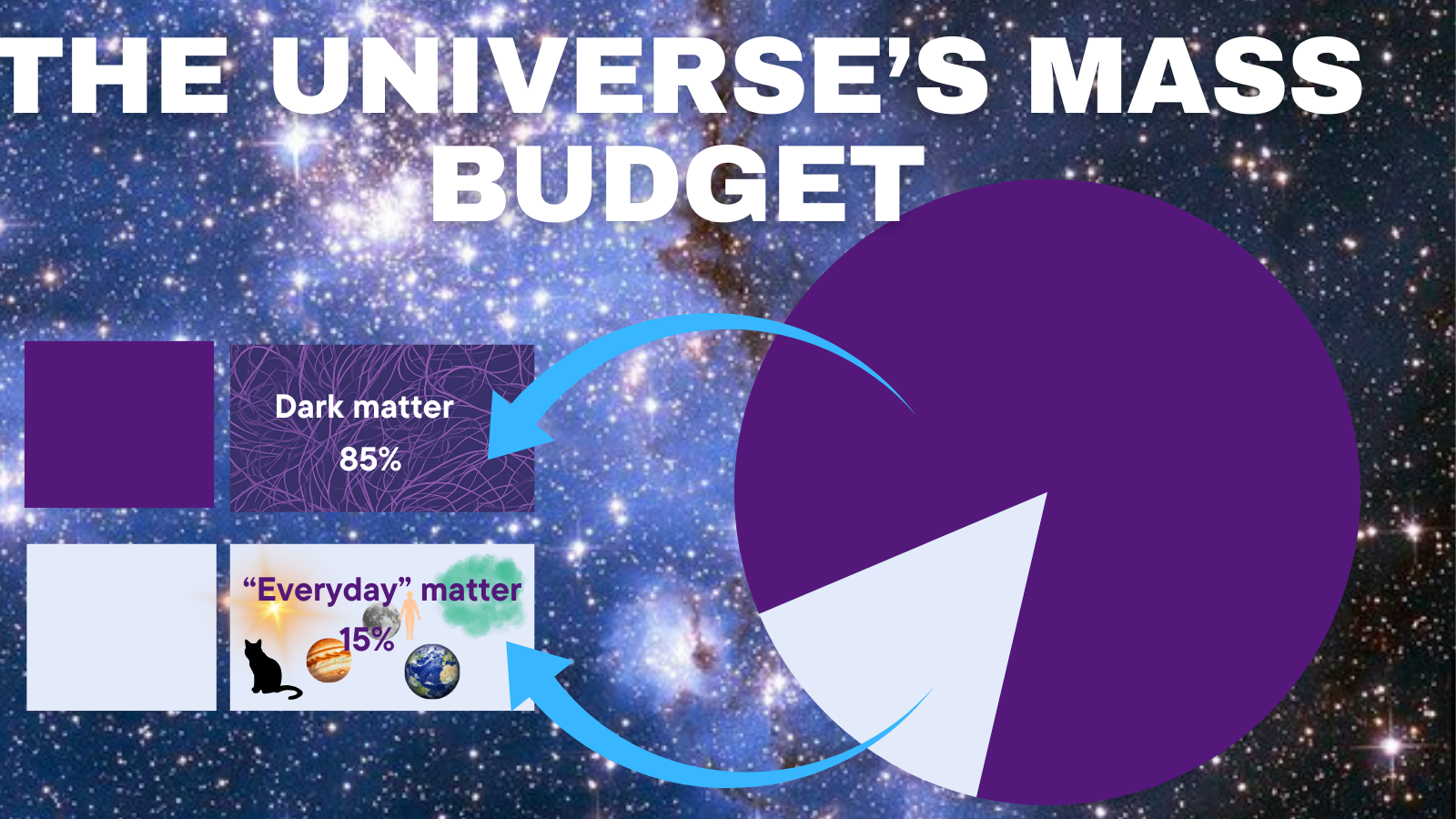Cosmic rays have surprising amounts of antimatter. Is dark matter responsible?
'The amount of antinuclei detected cannot be explained by known processes in the universe.'

An overabundance of antimatter in showers of charged particles that bombard Earth called cosmic rays could reveal the secrets of dark matter, the universe's most mysterious "stuff," a new study suggests.
Dark matter represents such a challenge to scientists because it makes up an estimated 85% of the matter in the cosmos but is effectively invisible because it doesn't interact with light. That means every atom making up every star, planet, moon, asteroid, comet, human, book, coffee mug, and cat is outweighed by dark matter by about five to one.
A team of researchers led by Pedro De la Torre Luque of the Institute of Theoretical Physics in Madrid theorizes that unaccountable amounts of antimatter, oppositely charged "mirror particles" to matter particles like protons and electrons, in cosmic rays could be the result of dark matter particle annihilation. However, the fine details of this connection could clear the leading dark matter suspect — WIMPs, shoft for "weakly interacting massive particles."
"We found that the amount of antinuclei, especially antihelium [the antimatter equivalent of helium nuclei], detected cannot be explained by known processes in the universe," De la Torre Luque told Space.com. "Antiparticles are not common in the interstellar medium [the gas and dust between stars], so finding a high production of them may indicate processes beyond what we know.
"In particular, if dark matter is a particle, it is expected that it will rarely annihilate and produce equal amounts of particles and anti-particles."
Related: Did dark matter help black holes grow to monster sizes in the infant cosmos?
The team's research could be bad news for the most widely supported candidates for dark matter, sending scientists back to the drawing board in the quest to understand the universe's missing mass.
Breaking space news, the latest updates on rocket launches, skywatching events and more!
Outta the way, WIMPs!
Though they remain one of the top suspects hypothesized to account for dark matter, WIMPs have remained frustratingly elusive to date.
"WIMPs are a general family of particles that are predicted by many minimal extensions of the Standard Model of Particle Physics, the model that explains the particles that we know of and their interactions," De la Torre Luque said. "They have never been observed, but they are wonderful candidates for dark matter because they are neutral, and they could be produced in the early universe by mechanisms similar to the process that created known particles."
The feeble interaction of WIMPs with the rest of the Standard Model particles means that they could have evaded all possible detection by our current experiments. Hence why, if they make up dark matter, it has not been directly detected yet. WIMPs would interact gravitationally, just like dark matter does. This is crucial, because it is the gravitational interaction of dark matter that has allowed scientists to infer its existence. So, WIMPS and dark matter are a good match in that respect, too.
One open question about dark matter is whether the particles that comprise it annihilate each other. Annihilation refers to what happens when a matter particle meets its antimatter counterpart and they destroy each other. For example, when an electron meets its antiparticle, a positron, the two annihilate, and their constituent energy is released back into the cosmos. Dark matter has been proposed to "self-annihilate" on the rare occasions when it self-interacts.
"WIMPs are expected to annihilate, producing pairs of particles and anti-particles in equal amounts," De la Torre Luque said. "While we expect that very little amounts of antiparticles are created in the interstellar medium by the processes that we know of, since we know that dark matter permeates all of our universe and WIMPs are the best candidates that we have for dark matter, one can expect copious amounts of antiparticles created in the galaxy by these WIMPs."
The team looked at the antiparticles of helium and antihelium in cosmic rays to try to find the signature of WIMP annihilation. Like "ordinary" helium atoms, antihelium can have three or four neutrons. That means it comes in two isotopes: antihelium-3 and antihelium-4.
The Alpha Magnetic Spectrometer (AMS) 02 experiment aboard the International Space Station (ISS) recently found very similar amounts of antihelium-3 and antihelium-4 in cosmic rays. Cosmic rays can themselves create antiparticles when they strike and pass through the interstellar medium. However, the amounts of antihelium detected in cosmic rays are much higher than those predicted by estimations of antinuclei production from cosmic-ray particles alone.
Related: What are cosmic rays?
The team investigated whether the WIMP dark matter candidate can explain this overabundance of antimatter. They found that WIMP annihilation could account for the overabundance of antihelium-3 but not the measured amounts of antihelium-4.
"While our predictions reveal that, under optimistic calculations, we can explain the observations of antihelium-3 with WIMPs as dark matter, we expect that WIMPs must produce much less amount of antihelium-4. By a factor of 1,000 less, in fact, because it is heavier than antihelium-3," De la Torre Luque said. "We found that WIMPs cannot easily explain these observations, and to solve this mystery, we would need even more exotic models of dark matter."
While this might initially seem like bad news, the view of WIMPs as "miracle particles" meeting all the requirements of dark matter has led to the effective abandonment of many other particle models.
Some of these WIMP alternatives may now be back on the table, as may non-particle explanations, such as the idea that dark matter could be comprised of subatomic-sized "primordial black holes" created during the Big Bang.
"If this production of antinuclei is the result of an unknown particle in the galaxy, this particle should have very specific properties to produce antihelium," De la Torre Luque concluded. "If we find that this particle can explain all the current observations for dark matter and that it could have escaped all the current investigations for new particles at particle accelerators, this will be a great dark matter candidate, and the detection of antihelium could be our only way to investigate it."
The team's research was published Oct. 4 in the Journal of Cosmology and Astroparticle Physics.

Robert Lea is a science journalist in the U.K. whose articles have been published in Physics World, New Scientist, Astronomy Magazine, All About Space, Newsweek and ZME Science. He also writes about science communication for Elsevier and the European Journal of Physics. Rob holds a bachelor of science degree in physics and astronomy from the U.K.’s Open University. Follow him on Twitter @sciencef1rst.



